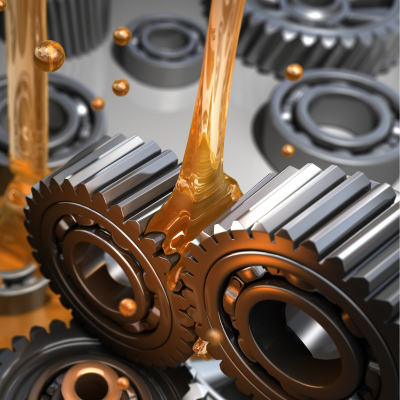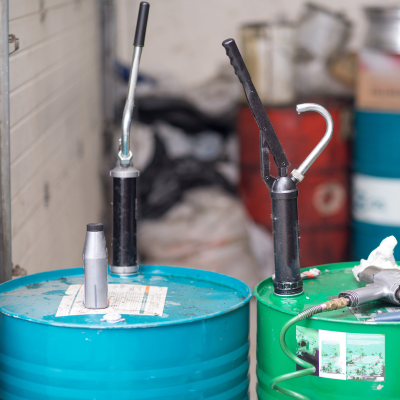Lubrication is an essential aspect of equipment maintenance and reliability. Minimizing friction, preventing wear and tear, and ensuring smooth machinery operations are critical.
Lubrication management has been integrated into Computerized Maintenance Management Systems (CMMS). But recent insights have highlighted the benefits of managing lubrication activities outside CMMS.
In this blog post, we will delve into why lubrication should be handled separately from CMMS and explore this approach's advantages. Whether you are a maintenance professional, a facility manager, or an industrial equipment operator, understanding this shift can help you unlock new opportunities to enhance equipment performance, reduce downtime, and improve productivity.

1. Streamlining Lubrication Processes
One of the primary reasons to manage lubrication activities outside CMMS is to streamline the entire process. Organizations can optimize lubrication practices by having a dedicated lubrication management system. This includes developing effective lubrication strategies, selecting a proper lubricant, establishing storage and handling procedures, and implementing proactive lubrication schedules. This approach eliminates clutter within the CMMS and focuses on lubrication-related tasks.

2. Enhancing Lubrication Accuracy and Efficiency
When lubrication management is separated from CMMS, it allows for greater accuracy and efficiency in lubrication practices. Lubrication-specific software and tools offer advanced functionalities, such as automatic scheduling, precise metering, and real-time monitoring. These capabilities enable better control over lubrication activities, reducing the risk of over-lubrication or under-lubrication. By optimizing lubrication accuracy and efficiency, equipment performance can be improved, leading to extended equipment lifespan and reduced maintenance costs.

3. Enabling Centralized Lubrication Knowledge
Decoupling lubrication management from CMMS allows for creating a centralized lubrication knowledge base. Organizations can gather lubrication data, record procedures, and capture critical insights by adopting specialized lubrication software or platforms. This knowledge repository becomes invaluable for the maintenance team, guiding lubricant specifications, application methods, and best practices. With easy access to such information, organizations can ensure consistency across lubrication processes and empower their workforce with the necessary knowledge to make informed decisions.

4. Facilitating Effective Lubricant Inventory Management
Effective lubricant inventory management is crucial for minimizing downtime and preventing equipment failures. Organizations can use dedicated lubricant management systems focusing on inventory control by managing lubrication outside CMMS. These systems help track lubricant usage, track stock levels, and generate timely alerts for replenishment. With accurate lubricant inventory data, organizations can reduce the risk of stockouts, cut excess inventory, and ensure the availability of suitable lubricant at the right time, thus maximizing equipment uptime.

5. Integrating Lubrication Management with Condition Monitoring
Another advantage of separating lubrication management from CMMS is integrating it with condition monitoring systems. Lubrication plays a vital role in condition-based maintenance, providing valuable insights into the health of equipment and its components. Organizations can leverage real-time lubrication data to detect anomalies, identify potential failures, and schedule maintenance activities by combining lubrication management with condition monitoring. This integration allows for a holistic asset management approach and enhances equipment's reliability.

Conclusion
Effective lubrication management is critical to maintaining high equipment performance and minimizing maintenance costs. By managing lubrication activities outside CMMS, organizations can streamline lubrication processes, enhance accuracy and efficiency, centralize lubrication knowledge, ease effective lubricant inventory management, and integrate lubrication with condition monitoring. These advantages enable maintenance professionals, facility managers, and industrial equipment operators to optimize equipment performance, reduce downtime, and improve productivity.
Embracing a dedicated lubrication management approach ensures that lubrication receives the attention it deserves, unlocking new opportunities for organizations to achieve excellence in equipment reliability and maintenance practices. By embracing this shift, you can lay a strong foundation for enhanced equipment performance and operational efficiency. To take your lubrication management to the next level, we invite you to explore the cutting-edge features and seamless integration offered by our partner, LubePM. Discover how their Maximo® integration and new enhancements can revolutionize your lubrication processes, streamline maintenance activities, and maximize equipment performance.
Suppose you are also ready to unlock the full potential of your lubrication program, partner with CRE Philippines, and experience the expertise of our renowned lubrication program development consultancy. Our professionals will work with you to design a customized lubrication program that optimizes equipment reliability, minimizes maintenance costs, and improves operational efficiency. Take the first step towards excellence in lubrication management by contacting us to learn more about our consultancy services and schedule a consultation today.
Sources:
Cash, W. (2023, February). Why Lubrication Should Be Outside the CMMS. Machinery Lubrication. https://www.machinerylubrication.com/Read/32285/why-lubrication-should-be-outside-cmms
Noria news wires. (n.d.). LubePM Announces Integration with Maximo®, New Features. Machinery Lubrication. https://www.machinerylubrication.com/Read/32332/lubepm-announces-maximo-integration-new-features


